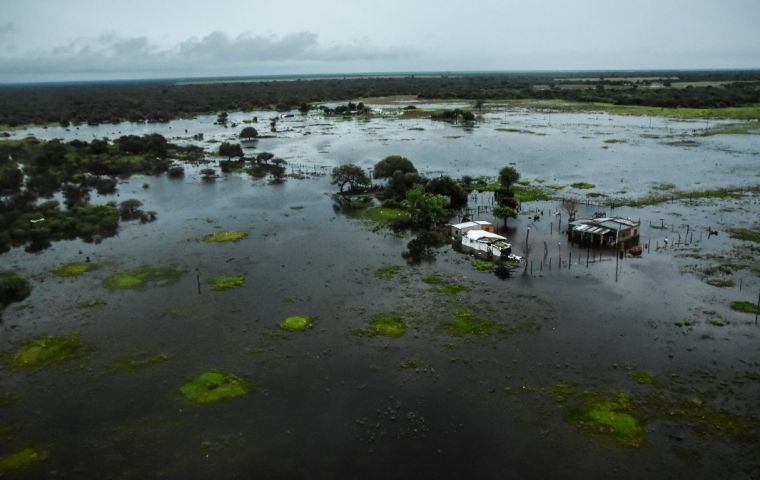MercoPress. South Atlantic News Agency
Despite excess rainfall in the north, Argentina still expects to collect 53.1 million tons of soybeans
 Some parts of Chaco province were hit by 150 to 300 millimeters of rain on Feb. 14 and 15, flooding fields and making transportation impossible
Some parts of Chaco province were hit by 150 to 300 millimeters of rain on Feb. 14 and 15, flooding fields and making transportation impossible It rained more in two days than it usually does in a month in some northern Argentine soy growing areas recently, but the crop losses will have little effect on national production when harvesting starts next month, farm weather experts said.
Southwestern parts of Chaco province were hit by 150 to 300 millimeters of rain on Feb. 14 and 15, flooding fields and making transportation impossible due to washed-out roads.
“It's been very hard on these specific areas, but in terms of the total production of the country, the effect has been marginal,” said German Heinzenknecht, a meteorologist at consultancy Applied Climatology in Buenos Aires.
“It's very difficult to have 300 millimeters of rain in a day without having crop problems as a consequence,” he said. “Looking forward the weather looks good. That's the good news.”
Argentina is expected by the Buenos Aires Grains Exchange to collect 53.1 million tons of soy, the country's main cash crop, in the 2019/20 season. Harvesting should conclude in June.
“The forecast for the next 10 days is very dry over most of the country, which would help wet areas dry down,” said Isaac Hankes, a weather analyst at Refinitiv Agriculture Research.
Chaco, a province in Northeastern Argentina, accounts for only 2% to 3% of Argentina's total soy and corn output, according to Refinitiv data, with most production coming from the bread-basket provinces of Buenos Aires, Santa Fe and Cordoba.
Argentina is a major exporter of corn and soybeans, as well as the number one international supplier of soymeal livestock feed.
Earlier in the season, Argentine farmers had generally been more concerned about dryness than flooding.
“This latest storm front brought more benefits than problems in the wider context,” said Buenos Aires Grains Exchange analyst Esteban Copati.
“That is not to say that the rains in Chaco did not cause crop losses. They definitely did. But that problem is not widespread,” Copati said.




Top Comments
Disclaimer & comment rulesCommenting for this story is now closed.
If you have a Facebook account, become a fan and comment on our Facebook Page!